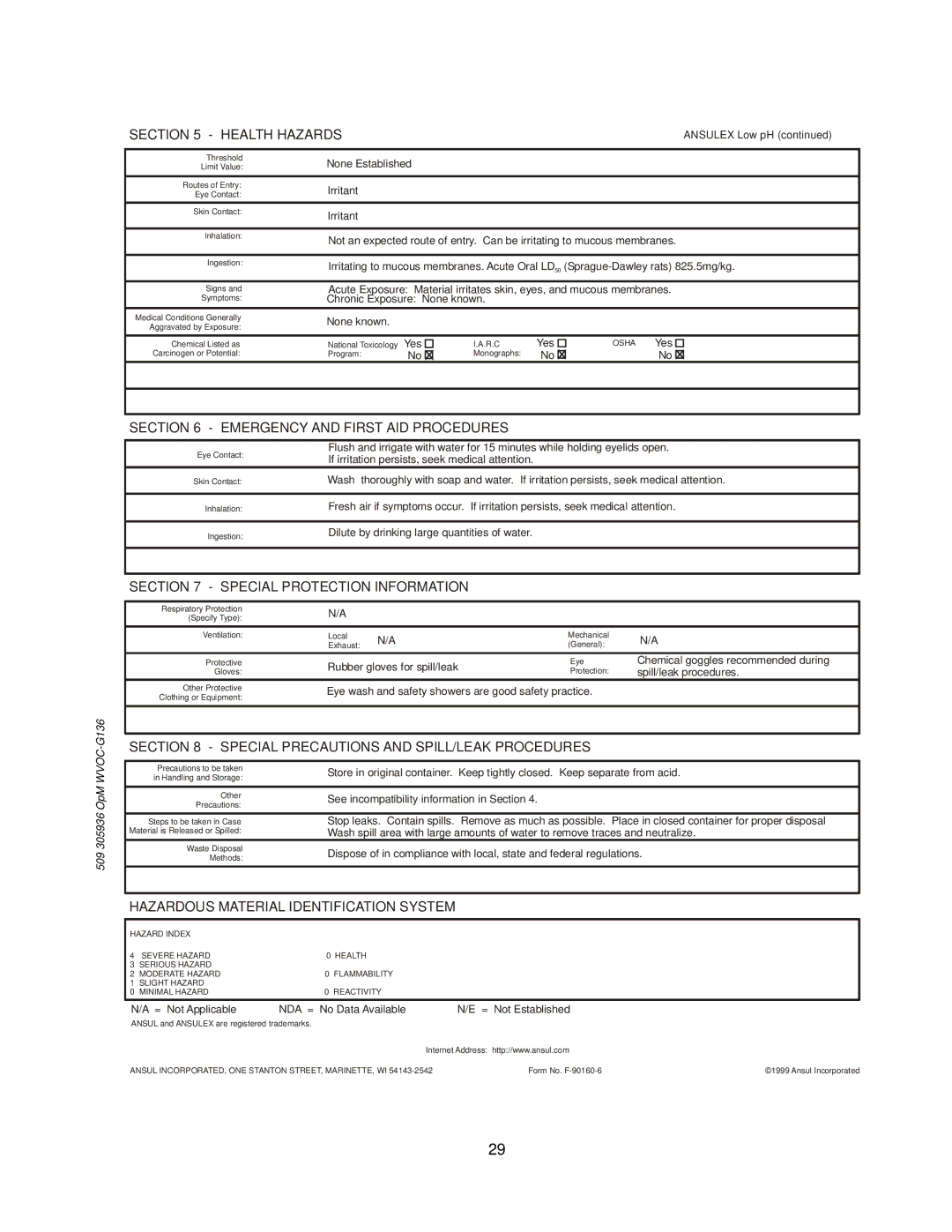WVOC-G136 specifications
The Wells WVOC-G136 is a highly regarded vapor abatement system specifically designed for the treatment of volatile organic compounds (VOCs) in industrial applications. This technology showcases a series of innovative features and characteristics that make it a top choice for facilities looking to minimize their environmental footprint while ensuring compliance with increasingly stringent regulations.One of the standout features of the WVOC-G136 is its efficient performance in removing harmful VOCs from emissions. Utilizing advanced adsorption technology, the system effectively captures and retains volatile organic compounds, significantly reducing their presence in exhaust streams. This not only helps organizations meet regulatory requirements but also aids in reducing potential health hazards associated with VOC exposure.
The WVOC-G136 employs a user-friendly design that simplifies the installation and maintenance processes. With modular components, it can be easily integrated into existing systems, offering flexibility and adaptability to various industrial settings. This design minimizes downtime and maintenance costs, making it a cost-effective solution for businesses seeking to enhance their emission control strategies.
In terms of technology, the Wells WVOC-G136 incorporates high-efficiency activated carbon media to maximize absorption rates. This media is designed to have a high surface area, allowing for the effective capture of a wide range of VOCs, including hazardous air pollutants. The system also features an advanced monitoring and control interface, which allows operators to track performance metrics continuously and ensure optimal functioning.
Another notable characteristic of the WVOC-G136 is its eco-friendly design. By reducing VOC emissions, the system contributes positively to air quality and overall environmental sustainability. This makes it ideal for industries such as pharmaceuticals, chemicals, and manufacturing, where VOCs are often prevalent.
Moreover, the WVOC-G136 is built with durability in mind, featuring robust materials and construction that can withstand the rigors of industrial environments. Its reliable operation ensures consistent performance over time, providing peace of mind for facilities focused on compliance and emission reductions.
In summary, the Wells WVOC-G136 is a powerful vapor abatement solution that combines advanced technology with user-friendly features. Its efficient VOC removal capabilities, eco-friendly design, and durable construction make it an ideal choice for industries facing stringent regulatory challenges while striving to protect the environment.

